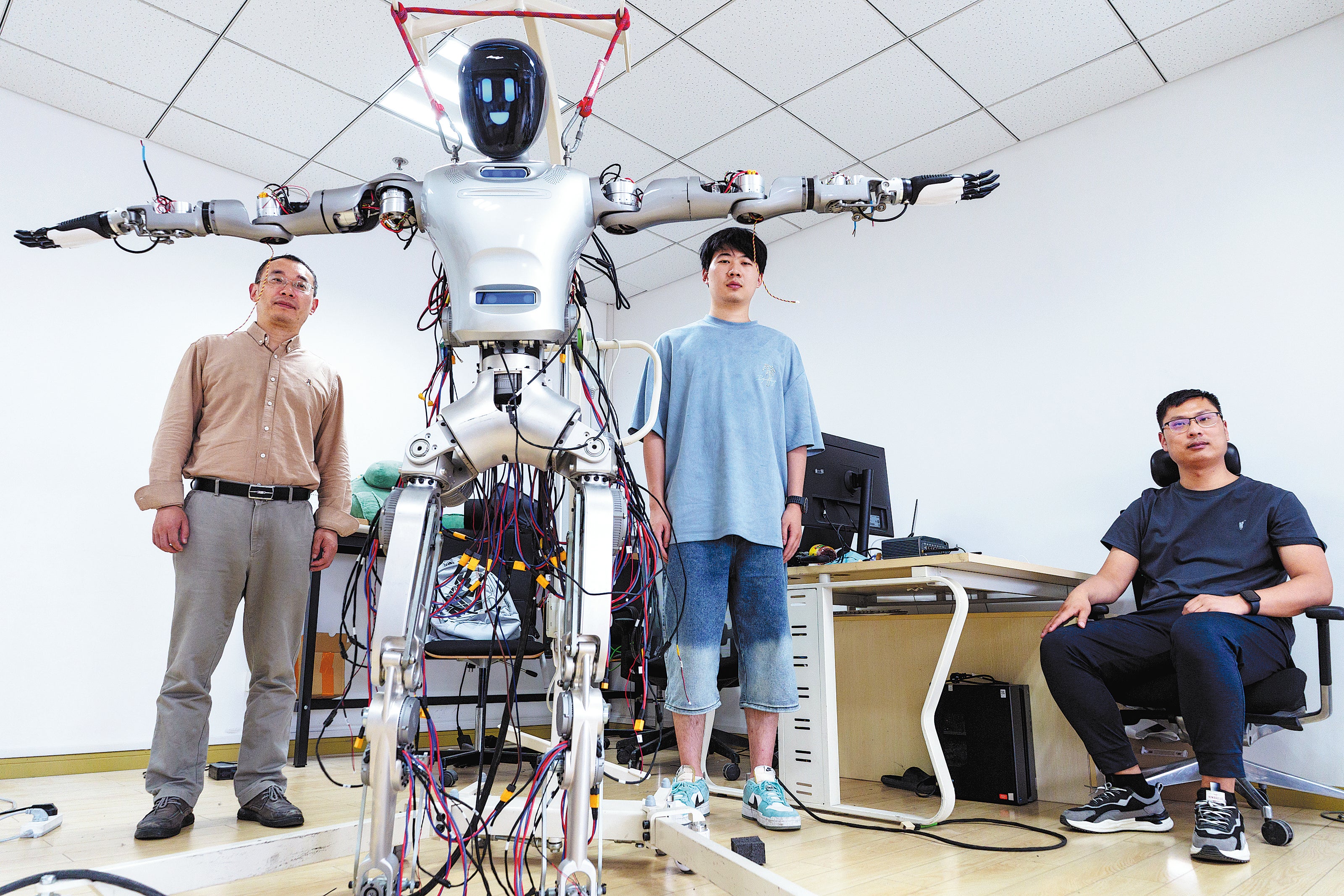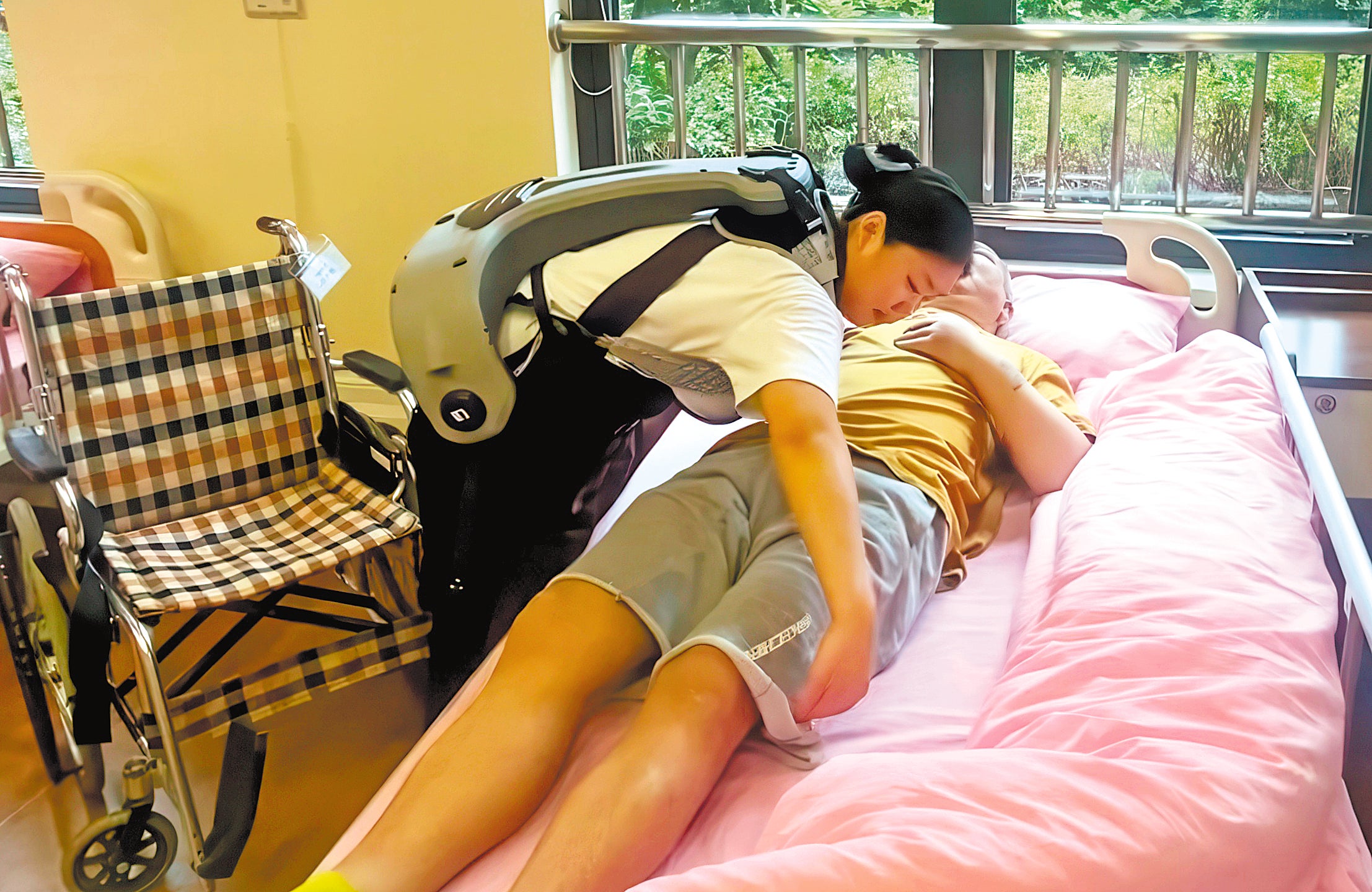‘Sympathetic’ humanoids at vanguard of robot solutions to elderly care
THE ARTICLES ON THESE PAGES ARE PRODUCED BY CHINA DAILY, WHICH TAKES SOLE RESPONSIBILITY FOR THE CONTENTS

In the not too distant future, humanoid robots will not only be able to perform caregiver tasks for the elderly, such as pushing them in a wheelchair, but also react to them with a range of sympathetic “emotions”.
Liu Lizheng, head of humanoid robot projects at Fudan University in Shanghai, said he believes that from a technical point of view these functions will be achieved in three to five years.
“In order for the elderly to accept being cared for by robots, they must be not only intelligent enough in fulfiling tasks, but also interactive in emotional aspects, so elderly users feel a sense of warmth and companionship akin to that of a loved one,” said Liu.
The Guanghua No 1 humanoid robot developed by his team is currently undergoing iterative software development and is set to make its debut at a top-tier hospital in Shanghai before the end of this year. The robot will demonstrate its application in elderly healthcare scenarios, Liu said.
The Guanghua No 1 humanoid robot made its public debut in July 2024. Standing 5.4 feet and weighing 137 pounds, the robot is capable of walking upright and displaying facial expressions.
One of the robot’s key features is its ability to perceive and respond to users’ emotions. It has an animated “cartoon-like” face that so far can express 21 different emotions, including joy, excitement, anger and sorrow.
In addition to emotional engagement, the robot’s physical interactions with elderly individuals must be gentle and precise. Compared with robots that perform general household duties, caregiver robots require a higher level of safety and precision.
“The daily routine of such a robot includes helping the elderly get up from a bed and supporting them to get to the bathroom,” Liu said.
The ultimate goal of the robot is to comprehend users’ intentions, and generalise its capability to deal with complex scenarios. The robot will need to be charged once a day, like a mobile phone.
Guanghua No 1 humanoid robot currently supports six languages: Chinese, English, French, German, Spanish, and Russian. Companies in countries, including Singapore, Japan and Russia, all of which have aging populations, have expressed interest in the robot, the research team said.

After mass production, the retail price of the robot is expected to be between 100,000 yuan (£10,324) and 200,000 yuan (£20,646), Liu said. At the International Exhibition of Senior Care, Rehabilitation Medicine and Healthcare Shanghai 2025 held in the city in June, over 500 domestic and foreign enterprises showcased their latest elderly care products, including exoskeleton robots and intelligent self-driving wheelchairs.
Some smart technologies showcased at the exhibition have already hit the market.
They include an intelligent self-driving wheelchair developed by Ankangtong, a Shanghai-based enterprise specialising in home care products.
The wheelchair can autonomously navigate indoor and outdoor environments, offering features like obstacle avoidance and real-time fall detection.
Another product with various practical applications is an exoskeleton robot developed by ULS Robotics, a high-tech enterprise founded in Shanghai in 2018. Elderly people with weak muscles can regain movement in their knees and hips by wearing an exoskeleton robot, the company said.
Ye Qing, a 75-year-old Shanghai resident, developed muscle atrophy and had difficulty walking after being laid up in the hospital for two months following surgery. “After wearing the device, I felt like it was driving my legs to walk, and I could lift my legs without making much effort,” Ye said. “I wasn’t able to walk on the stairs before, but it made it much easier for me to go up and down the steps.”
The exoskeleton weighs 11 pounds and takes around 30 seconds to put on or remove. It has already had practical application in some nursing homes.
Human caregivers who wear the device gain a “superpower” as it provides them up to 66 pounds of assistance when carrying a weight, and reduces the carrying burden on them by more than 60 per cent, the company said.
Xie Hongjun is a caregiver at Xiayang Subdistrict Nursing Home in Shanghai’s Qingpu district. Her daily routine involves taking care of six elderly people, which means helping them get up and down, turning them over in bed, and moving them around.
“I can clearly feel that the exoskeleton robot helps me reduce the burden on my waist. When I bend over, I feel like it’s pushing. And when I help an elderly individual get up from a bed or chair, I feel like it’s lifting them for me so I don’t have to make as much effort,” she said.
